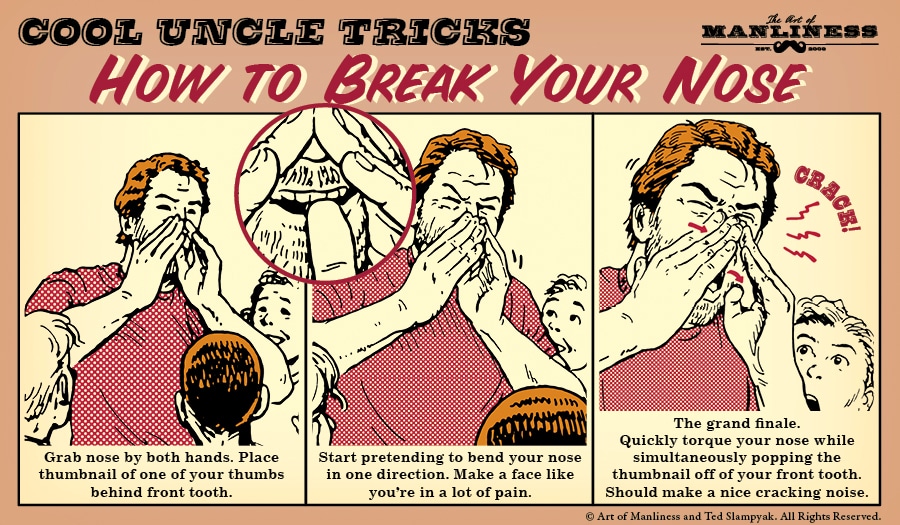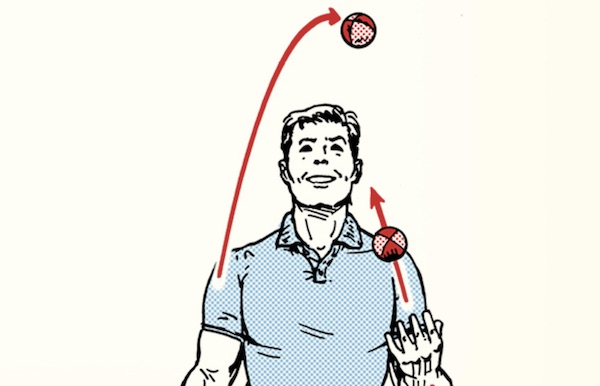
As noted in our article about weather proverbs, what the skies and winds are doing outside dictates a lot about our lives and daily actions. When it’s hot outside, and that heat seeps into your home, it’s hard to muster up the motivation to do just about anything. You’re damp, sticky, sweaty — it’s just plain uncomfortable.
So are you supposed to languish in the summer months and blankly stare at the boob tube while sweat drips down your forehead? Of course not! If you have air conditioning (70% of U.S. homes do), you can always blast it and create a nice wintry environment for yourself. But that uses a ton of energy and jacks up your bills. Plus, the artificial chill just feels wrong when it’s so warm outside. Isn’t there a way to find a happy medium and be comfortable while still feeling like it’s summer out there? Darn right there is!
Below you’ll find tips to keep your house cooler when the thermometer creeps up and up, ways to make your A/C use more efficient, as well as what you can do to keep your own person more comfortable.
Windows/Blinds
Open windows at night. In places and during times of year where it substantially cools at night (overnight temps in the mid-70s or lower), pop the windows open once the sun goes down. You’ll be amazed at how quickly the warm air is replaced with cool, refreshing air.
Better yet, utilize fans (or a whole house fan if you have one) to create tunnels of cool air coming into your home. To get the most out of your efforts with this method, crack a window on the main floor of the house, while widely opening a window on the second floor on the opposite side of the home, with a fan in that one sucking air out. Since heat rises, you’ll more quickly get the hot air out and cool air in.
Keep blinds closed during the day. Up to 30% of unwanted heat in your home is coming through your windows via the greenhouse effect — sunlight and heat enter, but cannot escape. The remedy is to keep your blinds closed during the day; if this makes your home feel too much like a cave, focus especially on west- and south-facing windows. Doing this can actually lower the mid-day temperature of your home by almost 20 degrees.
To make this action even more efficient, get light-colored blinds that will reflect rather than absorb the sun’s heat, and open them again at night when it’s cool. You can even place cardboard in the windows to further block heat from entering.
Appliances
As discussed above, windows are one of the biggest sources of unwanted heat in the home. The other biggest violator: appliances. The obvious is the oven, but all appliances throw off a lot of heat when running. Below are tips that will mitigate their heat output. I cover some A/C tips in this section as well to maximize its use and efficiency.
Do chores at night. Laundry machines throw off a lot of heat. The washer is running hot water, and driers are obviously using heated air which inevitably escapes and radiates out from the machine. Now, you can’t get away with not doing laundry (hopefully), but you can ensure it’s not heating your home during the hottest parts of the day. Do your laundry loads at night to keep things cooler. Also, regularly clean the dryer vent for a quicker cycle.
Your dishwasher also puts out a lot of heat. Like with laundry, run it at night to minimize the heating effect. If you have a quiet model, start it before you go to bed and you’ll wake up with clean dishes!
Skip the oven/stove; grill more. Any usage of the oven or even the stove-top is going to heat your home. So what’s one to do? Dust off the grill and get comfortable with it! You can grill many of the things you’d be making in an oven or on the stovetop — meat, pizza, veggies, fish, and even desserts like cobbler!
If you do use the stove, make sure to turn the fan on, especially if it vents to the exterior. If it just recirculates the air, it won’t cool things much, but it will at least improve airflow.
Keep the furnace fan on. Most thermostats allow you to manually turn the fan on that blows hot air through your home in the winter. In the summer, that fan can be run on its own to circulate and more evenly distribute the cooler air from the basement or main level. It also acts as another way to keep the air flowing and moving, which makes you feel cooler (more on that below).
Maximize your air conditioner. If you have A/C, the smoother and more efficient it runs, the better it will cool your house when called upon. Installing a programmable thermostat can help this process, rather than you fiddling with the temperature every morning and evening. Summer temperature recommendations are as follows:
- 75 degrees, +/- 1-2 degrees, during hours you’re home (the warmer the setting, the more energy efficient; energy.gov recommends 78 degrees, which seems a tad warm to me personally)
- 80 degrees, +/- 1-2, during hours you’re away
- Sleeping: it’s well-researched that people sleep better when it’s cooler. If there’s a time to crank the AC a little bit, the overnight hours might surprisingly offer the most bang for the buck. Experiment with a few different temp settings to see how you feel in the morning, and go from there.
These temperatures will feel very warm at first, but after a week or two, your body will adjust and you’ll get comfortable again. So don’t deviate too much from these recommendations until you’ve tried it out for a full week or so.
Change your AC filters regularly. Every 4-6 weeks, especially during the months of heaviest use, change out your air filters if you have an air conditioner (check them more frequently if you’re running the furnace fan). A dirty filter not only reduces air quality, but also efficiency of airflow. Know your filter size, and always have a few on hand.
If you don’t have an A/C or perhaps needs a replacement, this handy tool will give you an idea of what to expect for cost. Hint: It won’t be pretty.
House Exterior
Plant shade trees and other greenery. A well-placed tree can make a world of difference for the comfort of your home. Planting a tree likely won’t have immediate payoffs, but it’s a great way to both shade your home and add color and beauty to your property. Vines and other tall shrubs are other options which will have quicker results, but will likely require more maintenance in the long-term.
Add awnings, shades, and/or shutters to the exterior of your windows. Beyond blinds, these additional options provide yet another layer of protection from the sun. Awnings are your most effective (and most expensive) course of action, and can actually reduce heating gains by 65-75%, particularly when placed on south- and west-facing windows.
Consider a couple large upgrades like re-painting or getting a new roof. If the heat in your home is a real problem year in and year out, you’d do well to run the numbers on re-painting your home to a lighter color, and/or getting a new roof with more heat protection than the standard shingles (these include slate, concrete, clay, various tiles, and metal).
These two things are really the first line of defense in protecting your home against the heat of the sun. They should be reflecting and releasing the sun’s energy rather than storing and absorbing it. Having said that, these are obviously very expensive options, so should be considered either when they’re due for a replacement/upgrade already, or as said above, if the heat creates some real problems in your household.
Miscellaneous
Keep doors inside the home open. While in the winter, closing doors helps keep heat in specific rooms, doing so in the hot summer months is detrimental to your cause. You want air to flow freely through rooms and through the entire house. Great airflow means a cooler home, so keep inside doors open unless you want those rooms to become stifling hotboxes.
Turn on bathroom exhaust fans. While you should be turning on the fan anytime you shower, in the hot summer months, leave it on for a while longer than you normally would. Hot showers obviously heat up bathrooms quite a bit, and that heat can easily leak out into surrounding areas. So don’t just turn the fan off when you get out of the shower; leave it on for an extra 20 or 30 minutes so it can really pull the hot air out. And don’t worry about your energy costs — bathroom fans are simple devices that run at a very low cost.
Turn off/replace incandescent lights. While the soft yellow glow of incandescent light bulbs creates a nice ambiance in the home, they also give off a lot of heat. One or two lamps won’t make your house unbearable, but if you run on incandescent, swap a few out for cooler, more energy efficient bulbs.
Keeping the Person Cool
As we noted at the end of our piece on keeping your house warm in the winter, temperature maintenance is ultimately about keeping the person cool, not necessarily the house. You have to get a little more creative in the summer: while in cool months you can just throw on more clothes and blankets, you can only take off so many clothes.
The tips below won’t lower the temperature of your house, but they will lower yours, or at the least, make you feel cooler.
Optimize your sleeping. One of the worst parts of a hot day is when it seeps into night and you can’t sleep because you’re a sweating mess. There are a few things you can do to cool yourself at night and specifically for sleeping (particularly if you don’t have AC).
First, sleep on the lowest floor possible. If you have a basement, take up residence there. The ground floor of a multi-story home is another good option. Heat rises, so go where the cool air is. Now, for established families, this isn’t always a possibility, or desirable. In that case…
…try new bed sheets. Cotton is the way to go in the summer because of its light weight and breathability. You can also get specialty wicking sheets and other various fabric blends that are designed to keep you cool on warm nights.
And finally, make sure you have ceiling fans going at night. While not specifically a sleeping tip, it makes a world of difference when you’re lying there in bed in a bubble of hot stagnant air. Make sure your fan is rotating counter-clockwise (that is, not on the winter setting), and feel free to run it on high settings. While fans don’t lower the temperature of the room, they make you feel cooler because the air moving over your skin evaporates sweats and pulls heat away from your body. A fan moving at just 2mph will make you feel 3-4 degrees cooler, and at high speed many fans can hit 5mph. Not too shabby.
Create an ice fan. Fill a large mixing bowl with ice and place it in front of a large box fan. You’ll get a nice, chilled breeze. This is obviously only effective for a small area of space.
Take cold showers! Been itching for an excuse to try out cold showers or baths? Now’s the time! They carry a load of benefits, one of which of course is instant, all-over cooling.







